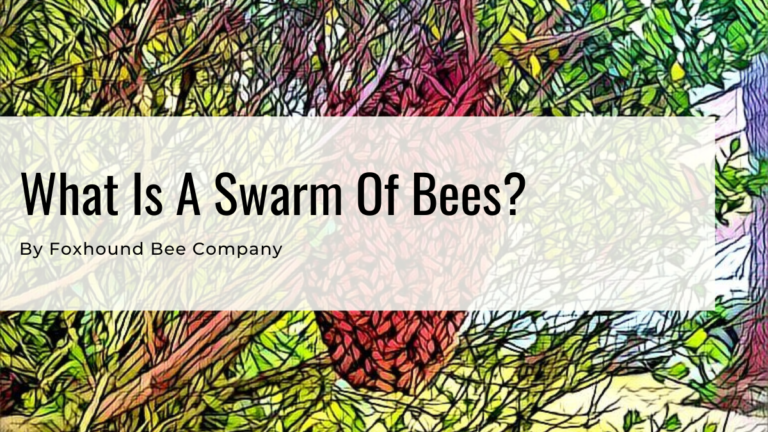Table of Contents
Oxalic acid has been around for a few years in beekeeping circles, but it is really gaining popularity. Especially the vaporization technique.
There are new tools and research available now that really make OA (oxalic acid) promising and easy to apply. Oxalic acid vaporization has emerged as an effective and organic solution to combat these pests and maintain thriving colonies.
In this blog post, we will explore the intricacies of oxalic acid vaporization, its methods, and equipment, as well as best practices and safety precautions to ensure the health and well-being of your bees.
We will walk through the tools, treatment windows, OA amounts, and more.
Key Takeaways
Oxalic acid is an effective organic treatment for Varroa mites in beekeeping and it is easier now than it has been in the past.
Various methods and equipment are available for oxalic acid vaporization, with safety to be followed when performing the treatment.
Monitoring mite levels and evaluating the efficacy of treatments must be done regularly to ensure successful management of varroa infestations.
Understanding Oxalic Acid and Its Role in Beekeeping
Oxalic acid (OA) is an organic compound and a naturally occurring organic acid found in various plants, such as vegetables, leafy greens, fruits, nuts, and seeds. It’s something that we consume all the time, and it’s naturally found in honey.
To me, it’s most obvious when you are eating raw leafy greens like spinach or kale. The tannic feeling you get when you eat them is the naturally occurring oxalic acid.
Interestingly, oxalic acid is 70 times more toxic to Varroa mites than honey bees, making it an ideal treatment for managing these pests.
Acid vaporization is a popular method for applying oxalic acid, as it can be both effective and relatively safe when done correctly. Despite requiring specialized equipment and meticulous execution, the potential benefits to honey bee colonies make it worth the effort.
There are other methods like the dribble method and slow-release cardboard strips like Aluen Cap that are possible too.
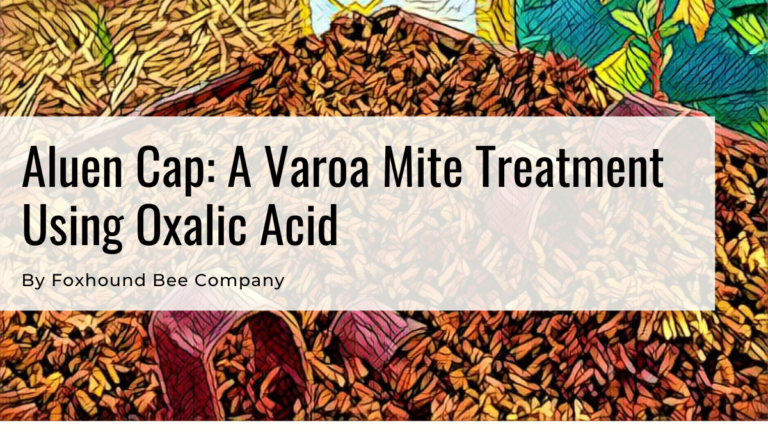
Aluen Cap: A Varoa Mite Treatment Using Oxalic Acid
Aluen CAP is a new product that helps beekeepers get rid of Varroa Mites. Aluen Cap uses oxalic acid, which has been proven to be effective in killing
The Importance of Varroa Mite Management
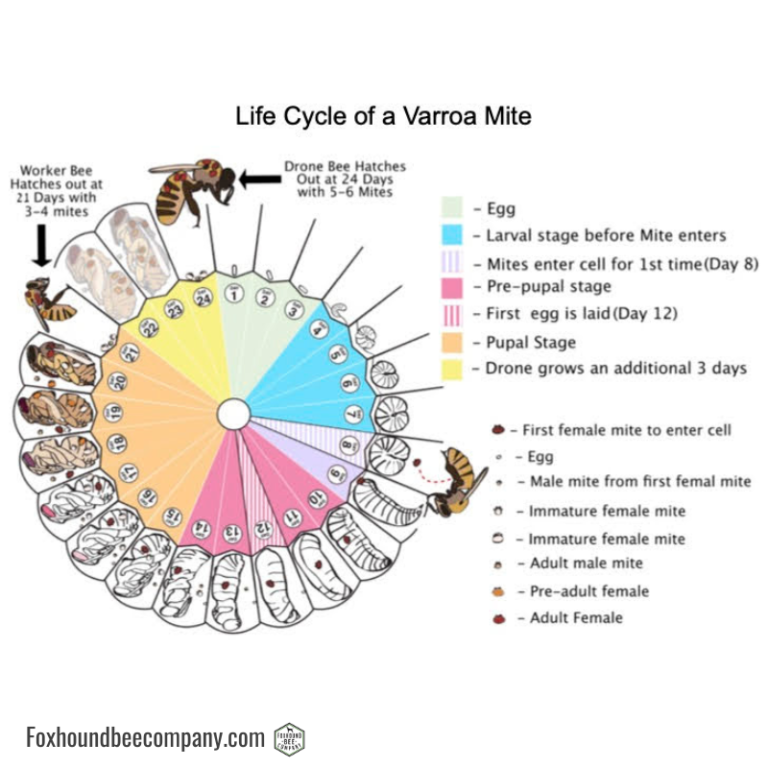
Varroa mites (Varroa destructor) are a well-known adversary in the beekeeping community. Signs of infestation include:
a spotty brood pattern
crawling or crippled honey bees
a decrease in honey bee population
Varroa feces on the insides of cells
If left unchecked, these phoretic mites can lead to increased vulnerability to diseases and a decreased survival rate during winter. If you don’t know what these are, a phoretic mite is a varroa mite that lives in the colony outside of a capped cell.
These mites are the only ones that OA can kill. It’s unfortunate, but varroa mites are here to stay, and it’s going to take a long time for our bees to manage them on their own.
The survival and prosperity of bee colonies largely depend on the management of Varroa mite populations. Effective mite management strategy, including the use of oxalic acid vaporization, helps reduce the risks associated with these high varroa mite levels and promotes healthier, more resilient colonies.
Oxalic Acid as an Organic Treatment
Compared to traditional chemical treatments to kill mites such as Apiguard, Apivar, Hopguard 3 and Formic Pro, oxalic acid, as an organic treatment, offers several advantages.
Research from the Georgia Honey Bee Lab highlights its effectiveness in managing Varroa mites. By utilizing oxalic acid, beekeepers can reduce the potential for contamination of hive products and protect winter bees from the harmful effects of chemical treatments.
Fewer chemicals in our hives is a good thing. Chemicals that break down quickly are the best option if using chemicals. Oxalic acid falls into the same category of organic treatments like Apiguard, Hopguard, and Formic Pro.
OA crystals are also called wood bleach, as it is used by woodworkers as a way to clean the surface of old wood.
There are several methods for applying oxalic acid in beekeeping, including the “dribble method” which involves using a syringe to administer the oxalic acid mixture on bees between the frames.
This ensures that honey bee larvae are not directly exposed to the treatment. Performing the treatment during a broodless period is advised to maximize its effectiveness. But it requires opening the hive up to do this treatment.
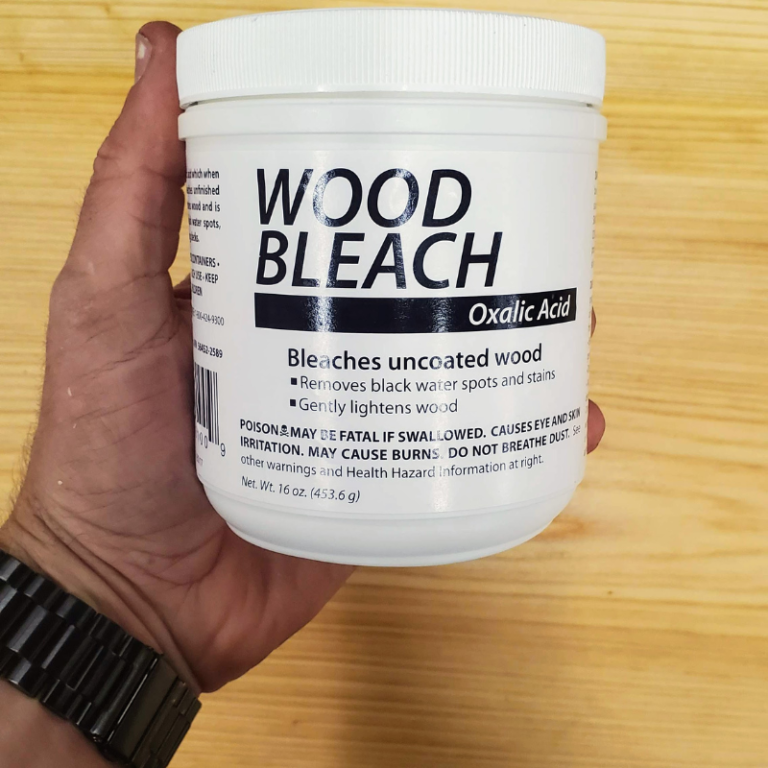
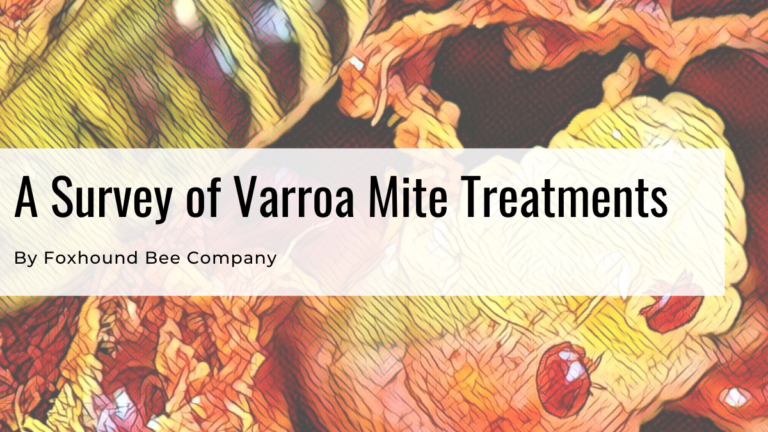
Survey of Varroa Mite Treatments
Varroa mites can be a real problem for bees and their beekeepers; understanding how to deal with varroa mites is the first step to help.
Oxalic Acid Vaporization: Methods And Equipment
The vaporizer or sublimation method both describe the same thing. When using OA with a vaporizer, the oxalic acid crystals are heated so quickly that it changes from a solid crystal to a gas in seconds. When a hive is filled with this gas and exposed to phoretic mites, the mites die.
This treatment is so fast, efficient, deadly on mites, and easy on bees that it is a beekeeper favorite. Which is why we use this treatment and recommend it to our customers.
See our Oxalic Acid Vaporizers.
Various methods and equipment are available for oxalic acid vaporization, each with its own unique features and benefits. Wand vaporizers, battery-operated vaporizers, and corded vaporizers are all employed to administer oxalic acid vaporization treatments to bee colonies. The benefits of utilizing oxalic acid vaporization instead of dribbling include faster application, the ability to apply treatment without opening the hive, and potentially being less damaging to bees and brood.
One should exercise extra caution when using oxalic acid vaporization to prevent inhaling the fumes. This makes it essential for beekeepers to use appropriate personal protective equipment and follow safety protocols when performing the treatment.
Wand Vaporizers
Wand vaporizers are a popular choice for beekeepers, particularly those with a small number of hives. They are simpler to use and are relatively inexpensive compared to other units. They typically consist of a metal pan that holds the powdered form of OA, a long handle, and a cable that connects to a car battery. Following a detailed procedure is vital to ensure successful oxalic acid treatment using a wand vaporizer. Here are the steps to follow:
Close any upper entrances of the hive with a towel.
Inspect for any hanging comb using a flashlight.
Position the vaporizer near the brood area.
Activate the vaporizer for approximately 2.5 minutes or until the crystals are gone.
Disconnect the power source.
By following these steps, you can effectively use oxalic acid to treat your hive with a wand vaporizer.
The negative side to these types of vaporizers is that the pan that is heated is placed directly inside the hive. With a heat source inside the hive, this could hurt or kill bees, burn the wood, or worse, catch the flammable wax and wood on fire.
Battery-Operated Vaporizers

Battery-operated vaporizers, such as InstaVap or it’s slightly more affordable brother InstaVap Compact, offer a cordless option compatible with Dewalt, Milwaukee, Makita, Rigid, and other batteries, providing convenience and portability.
These vaporizers eliminate the need for a constant power source, making them an ideal choice for beekeepers who require mobility in their operations.
This vaporizer is different than the wand vaporizers as the heated unit does not go into the hive. A short stem goes into the hive from the back or the front of the hive. Which makes this much easier to use.
The pricing for InstaVap battery-operated vaporizers can be very pricey but is affordable for the serious beekeeper. Battery-operated vaporizers provide convenience, but one should consider the specific model and battery capacity when selecting a vaporizer to maintain consistent performance and efficacy.
The Instavap vaporizer is made well enough that it should last a very long time and comes with a great warranty and built-in battery protection. Even though it uses a battery, it can treat a hive every 20-40 seconds. The larger your battery, the more hives that it can treat.
Corded Vaporizers
Corded vaporizers are inserted into the front or the back of the hive, the same as the Instavap. The main difference between corded vaporizers and the battery-powered unit is the power source.
These vaporizers provide a reliable power supply for consistent vaporization, eliminating the need to manage battery life or recharging. But you need to run an extension cord from a power outlet or an inverter.
We used one of these units for years and ran an inverter from the truck battery into an extension cord that reached our hives. It worked great, but you do have to drive up to the hives to use this method easily.
There are a few different versions of these on the market, and we have used many of them. By far, the one that we recommend the most is the Lorob branded corded vaporizers. There are several options so you can find the style that fits your hives.
These units are designed to either be inserted in the entrance of the hive or through a hole drilled in the back of the hive.
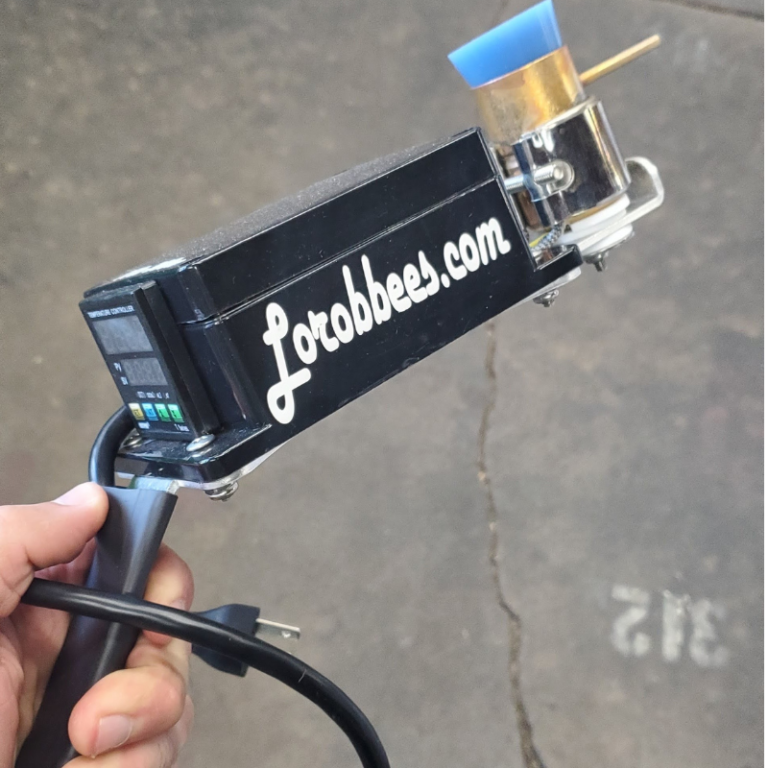
How to Apply Oxalic Acid Vaporization: Step-by-Step Guide

Applying oxalic acid vaporization safely for both the bees and the beekeeper requires a step-by-step guide. The process begins with preparing the hive and gathering the necessary materials, such as oxalic acid dihydrate (OA), oxalic acid vaporization equipment (e.g., vaporizer or wand), protective eyewear, a respirator or mask, and a way to close the entrance of the hive and the bottom of the hive if using a screened bottom board.
Following the proper procedure for performing the treatment is essential for achieving the desired results.
This encompasses wearing appropriate personal protective equipment like a respirator, safety goggles, and gloves, as well as adhering to the specific instructions provided by the equipment manufacturer.
Oxalic acid is extremely hard on the lungs, so you want to avoid inhaling it at all costs. No exceptions to this safety requirement.
Preparing the Hive and Materials
For a successful oxalic acid vaporization treatment, ensure proper hive preparation and gather the necessary materials. Ensure that the the hive entrance is securely sealed to prevent the escape of the vaporized acid. It doesn’t have to be airtight, but you should try and block most of the vapor from leaving the hive immediately.
One tip for preparing that is very helpful is to do a test with oxalic acid outside the hive. Doing this allows you to see how long it takes for the dose to turn into a vapor. Make sure you are wearing a mask and standing up wind.
How Much Oxalic Acid Do I Use?
The general advice for how much oxalic acid to use is based on the USDA recommendation for 1 gram (1/2 teaspoon) per box. This would apply to any size box from 5 to 10 frames. Specifically, 1 gram for every brood box. Most beekeepers are performing a treatment when honey boxes are not present, but it is allowed to use oxalic acid when honey boxes are on the hive.
There has been a lot of research into the dosage level of oxalic acid. There is very good research from the University of Florida that suggests the USDA amount is far too small. 4 grams for 2 boxes of brood has been found to be a helpful amount. 4 grams is equal to 1 teaspoon.
Performing the Treatment
Just before applying the oxalic acid vaporizer, you will want to block the entrance and cover the screened bottom board. We use these varroa mite boards to close the screened bottom up. If using a solid bottom board, you just need to close the entrance. A dry towel works great.
If using the wand-type vaporizer, you’ll need to slide the wand into the hive from the front. If using one of the corded vaporizer or battery-powered options, you’ll need to drill a hole in either the bottom box or the top rail of the bottom board. This hole is where you place the stem of the vaporizer.
PRO TIP: If drilling into the back of the hive, plug the hole with an extra-long golf tee after treating. This keeps bees from propolising the hole shut.
These are links to the OA safety equipment you need. More details on that are below.
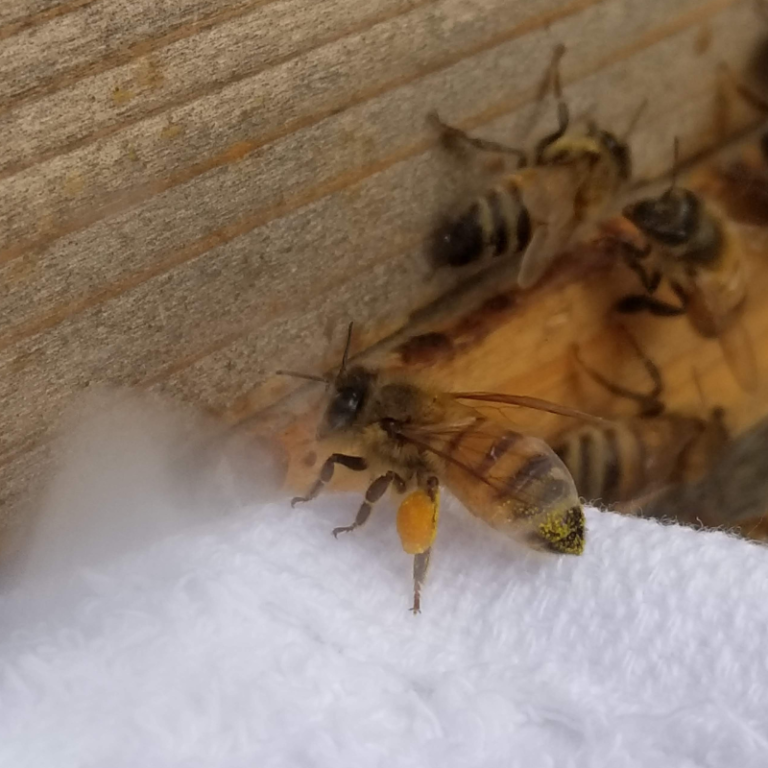
Timing and Frequency of Treatments
The success of the treatment hinges on the timing and frequency of oxalic acid vaporization treatments. Treating during broodless periods, such as very late fall or winter, allows for a higher success rate in eliminating varroa mites.
When treating with capped brood present, a common approach is to:
Apply treatments at 4-6-day intervals to maximize mite exposure while minimizing harm to bees.
Repeat every 4-6 days at least 4 times.
Monitor mite levels and evaluate treatment efficacy once the series of treatments is completed.
This approach helps beekeepers effectively manage mite control in their bee hives, ensuring the health of their bee colonies by addressing the issue of mites in the hive even during periods with brood.
Broodless Periods
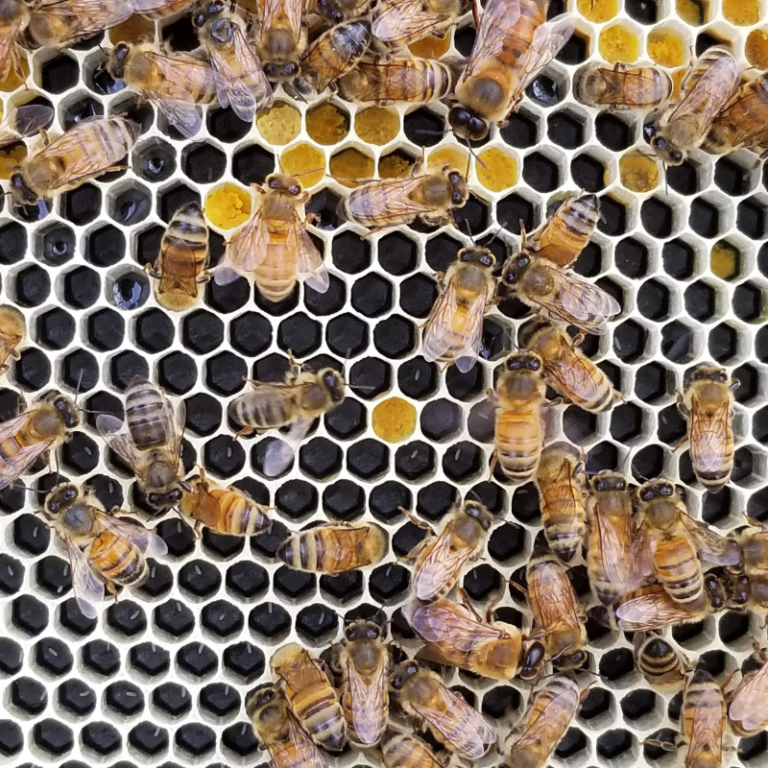
For a higher success rate in eliminating varroa mites, treating during broodless periods is advisable. By this, we mean a period when there is little to no capped brood.
OA is effective when open brood is present. Most beekeepers anticipate an efficacy of 99% or higher in eradicating exposed Varroa when treated during broodless periods.
Timing treatments during a broodless period is critical for achieving a nearly 100% mite kill.
Oxalic acid treatment during this time can provide a nearly mite-free environment for new bees, protecting them from physical damage due to parasitization and the harm of diseases spread by mites. This gives your bees a really great start in the spring.
For most beekeepers, brood is present in their hive for the majority of the year. The winter is a natural time when many hives are partially or completely broodless. So treating bees during the end of December and early January is a great time to treat.
Another time where brood is not present is when a swarm is placed in a hive or during a period of requeening. There is usually a gap of a couple of weeks when capped brood is not in the hive, and vaporization is very helpful.
It is also possible to cage the queen to make sure she can’t lay any eggs. This method is very effective, but she has to be caged for 2 weeks.
Treating with Capped Brood Present
When treating with capped brood cell still present, the approach of applying treatments at 6-day intervals is recommended. This helps maximize mite exposure while minimizing harm to bees.
However, it is important to note that oxalic acid is not effective against varroa mites within capped brood cells, which can impact the overall success of the treatment.
When treating with capped brood present, one must monitor mite levels and evaluate treatment efficacy after each series of treatments is complete, especially when there is brood in the hive.
This helps beekeepers maintain healthy colonies and adjust their treatment plans as needed to ensure the most effective and safe treatment methods are used.
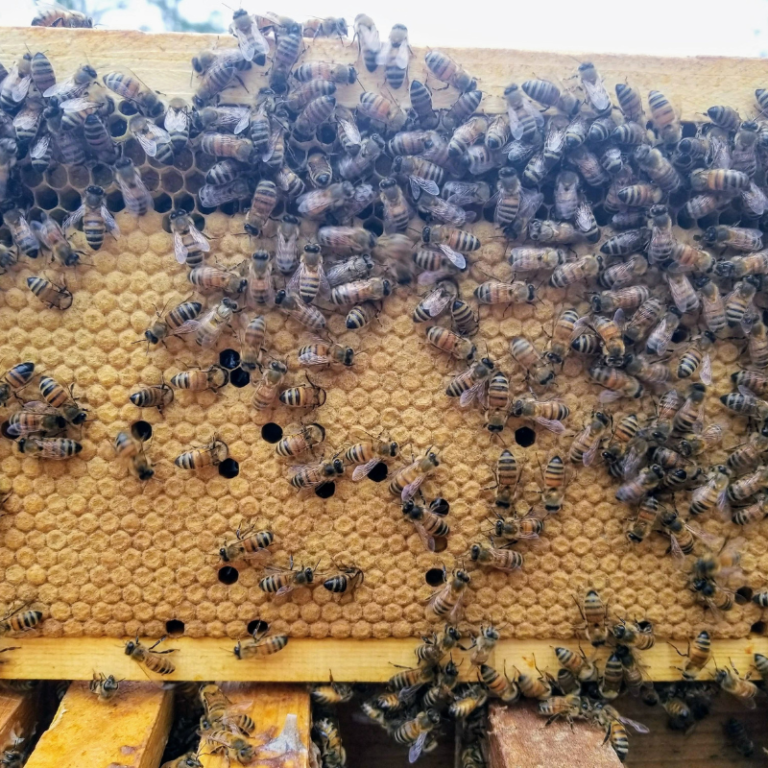
Monitoring Mite Levels and Treatment Efficacy
To maintain healthy colonies and adjust treatment plans, it’s necessary to monitor mite levels and evaluate treatment efficacy. Various mite count methods, such as sugar rolls or alcohol washes, help beekeepers assess the severity of varroa infestations.
Mite Count Methods
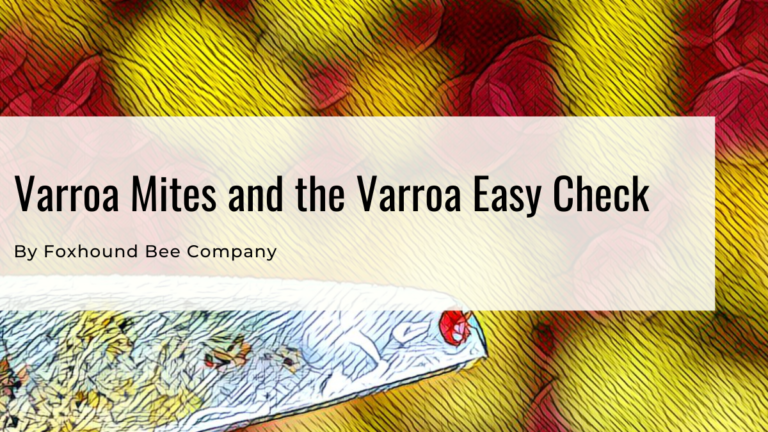
Varroa Mites and The Varroa Easy Check
Varroa Mites are insects that live in a honey bee colony and make it hard on bees to thrive. Well tell you what they are
arious mite count methods are available to help beekeepers assess the severity of varroa infestations. Sugar rolls and alcohol washes are two non-lethal techniques for determining the varroa mite infestation rate on a subset of adult bees within a colony.
These methods involve coating the bees with either powdered sugar or alcohol, shaking them in a jar, and then counting the number of mites that fall off.
Selecting an appropriate mite count method depends on individual preferences and specific needs. The alcohol wash is the most effective technique for assessing varroa mite loads, but it is important to choose a method that aligns with personal preferences and beekeeping goals.
Our favorite tool for doing a mite wash is the Varroa Easy Check.
Evaluating Treatment Success
An integral part of effective mite management is evaluating treatment success. A decrease in mite count following an oxalic acid treatment indicates a successful treatment, as it suggests that the application of oxalic acid has successfully eliminated or reduced the mite population.
Oxalic acid is considered a flash treatment, so the amount of varroa mites that will die will be extremely high in the first 24 hours. After that, there is not any ongoing mite control. After 24 hours, you can perform a mite count to check its effectiveness.
Safety Precautions and Best Practices
For the well-being of both the bees and the beekeeper, make sure you take care of yourself when using oxalic acid. Wearing personal protective equipment, such as a respirator, safety goggles, and gloves, is essential for protecting oneself from the harmful effects of oxalic acid.
Personal Protective Equipment
To guard against the harmful effects of oxalic acid, one must wear a respirator, safety goggles, and gloves. A half-face respirator with acid gas cartridges is required for oxalic acid vaporization when using any type of vaporizer, while a full-face respirator with the same cartridges makes sure you are very safe.
It is possible for oxalic acid to blow out of its container when heated. Afterall, it is a hot gas and if the stem of the vaporizer or the hole it is going in is clogged with propolise, it can blow off the cap.
Nitrile gloves are recommended for handling oxalic acid, as they offer sufficient protection and are resistant to punctures. By wearing the appropriate personal protective equipment, beekeepers can ensure their safety while performing oxalic acid vaporization treatments.
Staying Informed and Updated
To maintain the most effective and safe treatment methods, it is important to keep up to date with the latest research and recommendations. The University of Florida’s updated dosage recommendations for oxalic acid vaporization suggest a larger dose than the USDA recommends. Maybe the USDA will change their policy on treatment levels.
Randy Oliver is a researcher in California that is working very hard to make it legal for beekeepers to use oxalic acid in a variety of ways.
By staying informed about the latest research, beekeepers can make informed decisions about their treatment plans and ensure the health and well-being of their bee colonies. Continuous learning and adaptation are key components of successful beekeeping.
Frequently Asked Questions
At what temperature does oxalic acid vaporize?
Oxalic acid starts to vaporize at 315°F and decomposes to formic acid and carbon monoxide at 372°F.
How do you vaporize oxalic acid?
To vaporize oxalic acid, you can use a heated tool that quickly turns the crystals into a gas. Beekeepers use specialized tools to do this.
What temperatures can you use oxalic acid for honey bees?
Oxalic acid vaporization can be done in outside air temperatures as low as 37 degrees F, making it a viable method for controlling V. destructor in honey bee hives. It is a legal application method in the U.S., and results in the death of exposed mites.
When should I treat my bees with oxalic acid?
Oxalic acid is typically applied in late fall or over the winter, when there are very few Varroa under capped brood and very little capped brood.
What types of vaporizers are available for oxalic acid treatments in beekeeping?
Oxalic acid treatments in beekeeping can be accomplished using wand vaporizers, battery-operated vaporizers, or corded vaporizers.

